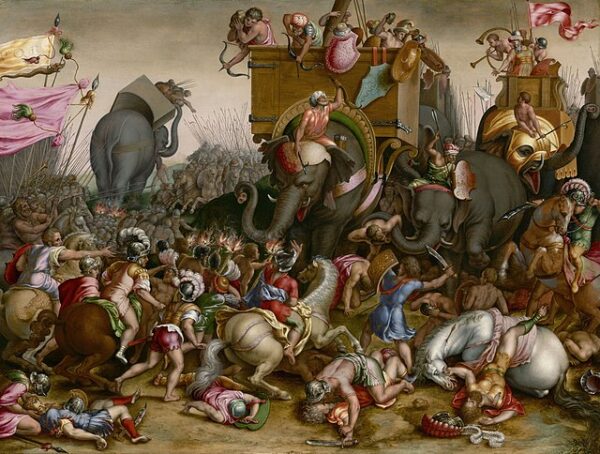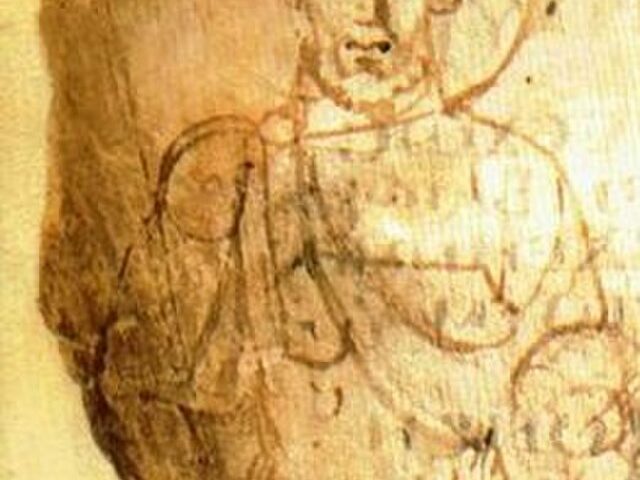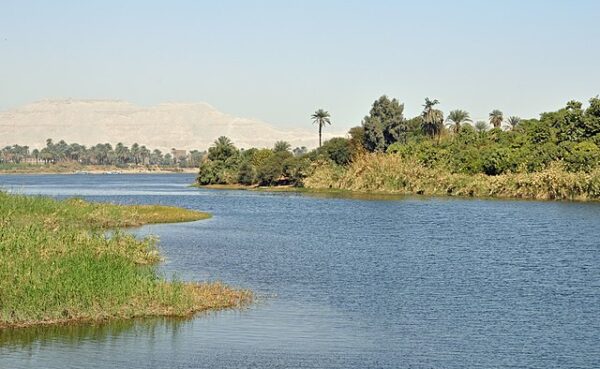One of history’s most important battles occurred on this date in 202 BC, deciding the fate of two empires and changing the course of Western history. The Battle of Zama was a pivotal engagement between the forces of Rome, led by Scipio Africanus, and the Carthaginians, led by Hannibal Barca. This battle marked the culmination of the Second Punic War, one of the most significant conflicts in ancient history. The showdown at Zama had far-reaching consequences for the fate of Carthage and the future of the Roman Republic.
Hannibal, known for his tactical genius and the use of war elephants, had waged a relentless campaign against Rome in Italy for over a decade. However, Scipio Africanus, a brilliant Roman general, took the war to Carthaginian territory in North Africa, forcing Hannibal to return and defend his homeland.
By the year 202 Carthage was in great danger of attack from the forces of the Roman general Publius Cornelius Scipio, who had invaded Africa and had won an important battle barely 20 miles (32 km) west of Carthage itself. The Carthaginian generals Hannibal and his brother Mago were accordingly recalled from their campaigns in Italy. Hannibal returned to Africa with his 12,000-man veteran army and soon gathered a total of 37,000 troops with which to defend the approaches to Carthage. Mago, who had sustained battle wounds during a losing engagement in Liguria (near Genoa), died at sea during the crossing,” explains Brittanica.
“Scipio, for his part, marched up the Bagradas (Majardah) River toward Carthage, seeking a decisive battle with the Carthaginians. Some of Scipio’s Roman forces were reinvigorated veterans from Cannae who sought redemption from that disgraceful defeat. Once his allies had arrived, Scipio had about the same number of troops as Hannibal (around 40,000 men), but his 6,100 cavalrymen, led by the Numidian ruler Masinissa and the Roman general Gaius Laelius, were superior to the Carthaginian cavalry in both training and quantity. Because Hannibal could not transport the majority of his horses from Italy, he was forced to slaughter them to keep them from falling into Roman hands. Thus, he could field only about 4,000 cavalry, the bulk of them from a minor Numidian ally named Tychaeus.
Hannibal arrived too late to prevent Masinissa from joining up with Scipio, leaving Scipio in a position to choose the battle site. That was a reversal of the situation in Italy, where Hannibal had held the advantage in cavalry and had typically chosen the ground. In addition to utilizing 80 war elephants that were not fully trained, Hannibal was also compelled to rely mostly upon an army of Carthaginian recruits that lacked much battle experience. Of his three battle lines, only his seasoned veterans from Italy (between 12,000 to 15,000 men) were accustomed to fighting Romans; they were positioned at the rear of his formation.
Before the battle, Hannibal and Scipio met personally, possibly because Hannibal, perceiving that battle conditions did not favour him, hoped to negotiate a generous settlement. Scipio may have been curious to meet Hannibal, but he refused the proposed terms, stating that Carthage had broken the truce and would have to face the consequences. According to Livy, Hannibal told Scipio, “What I was years ago at Trasimene and Cannae, you are today.” Scipio is said to have replied with a message for Carthage: ‘Prepare to fight because evidently you have found peace intolerable.’ The next day was set for battle.
The battle is famous for Scipio’s innovative tactics, including a well-planned cavalry charge that disrupted the Carthaginian forces. Hannibal’s elephants, once a formidable asset, proved ineffective due to Roman countermeasures. Ultimately, the Romans defeated the Carthaginians, with Hannibal narrowly escaping capture. This battle marked the end of Carthage as a major power and solidified Rome’s dominance in the Western Mediterranean.
The Battle of Zama also had significant diplomatic repercussions. Following their defeat, Carthage was compelled to accept extremely harsh peace terms, which included heavy reparations and a reduction of their military forces. This weakened Carthage considerably and left it vulnerable to future conflicts. The Second Punic War’s conclusion with the Battle of Zama shaped the course of Roman history, establishing Rome as the preeminent Mediterranean power and foreshadowing the eventual downfall of Carthage.






